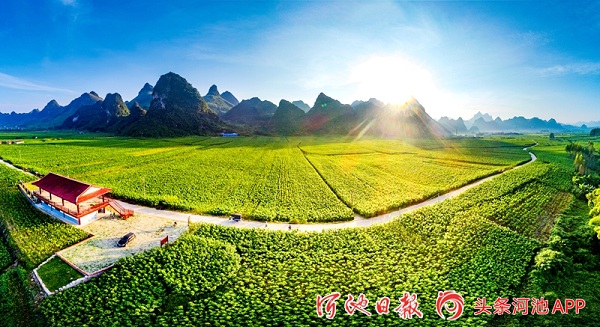$139 m cocoon silk project starts construction in Yizhou
By (chinadaily.com.cn)
2020-06-01
 |
|
A silkworm and mulberry base in Shangping village, Desheng town, Yizhou district, Hechi. [Photo/Hechi Daily] |
A silk dyeing project, which has a total investment of nearly 1 billion yuan ($139.93 million) and an annual output of 20 million meters, was officially started in Yizhou Economic and Development Zone of Hechi on May 28.
Invested in by the Silk Road Holding Group, one of the leading companies of China's silk industry, the project will fill the gap in the whitening, dyeing, and printing technology at the middle end of the silkworm, cocoon, and silk industry chain in Guangxi. It will also promote the primary processing of cocoon silk to deep processing.
Hechi has a long history of planting mulberry and raising silkworms, which can be traced back to the Jiajing reign period of the Ming Dynasty (1368-1644). Since 2006, Hechi has vigorously mobilized people to plant mulberry and raise silkworms. At present, the city has 940,000 mu (62,666.67 hectares) of mulberry gardens and the annual output of fresh cocoons reaches 140,000 tons.
More than 30 kinds of mulberry silk products, such as high-grade raw silk, silk masks, and silkworm pupae, are exported to more than 10 Asian and European countries and regions, including Japan, India, Italy, and Romania.
Ling Lanfang, chairman of the Silk Road Holding Group, said that the project aims to extend the silkworm, cocoon, and silk industry chain, as well as promote the upgrading of the industry and its products so that it boasts high technology, high added value, and high cost performance.
The industry chain will not only help poverty alleviation efforts in Hechi, but also benefits ecological environmental protection and the development of regional economy, said Tang Lin, chairman of the China Silk Association.




